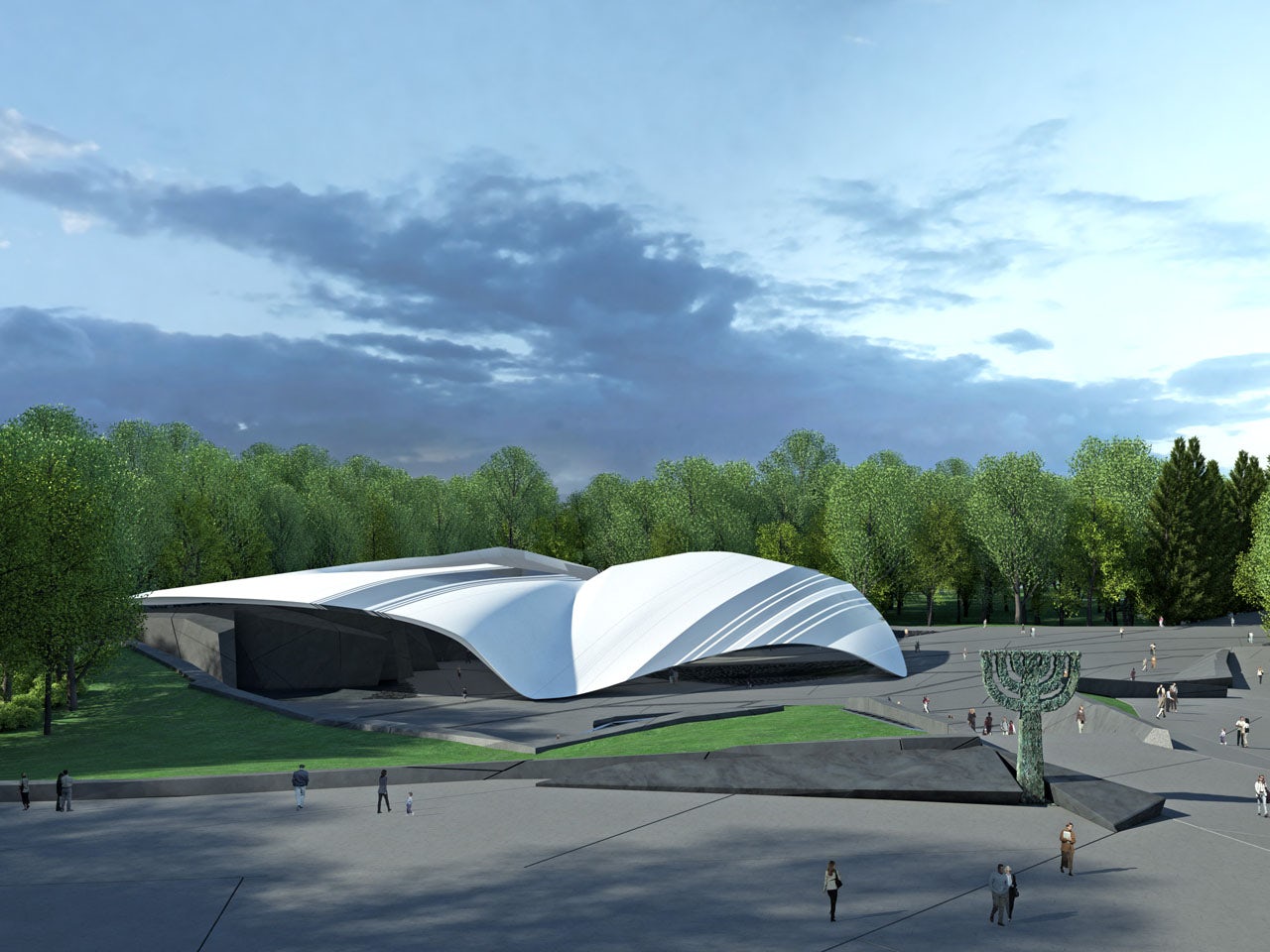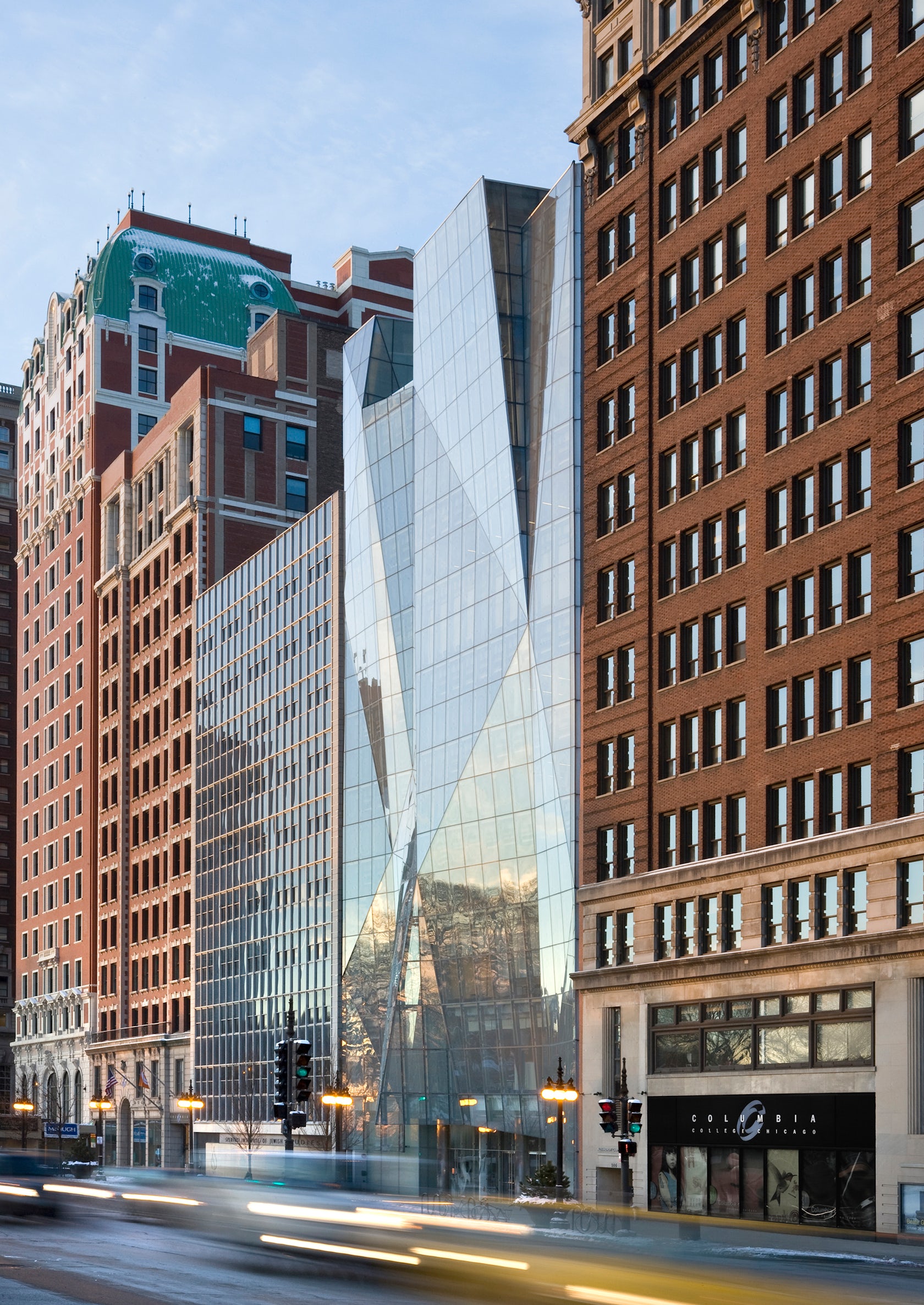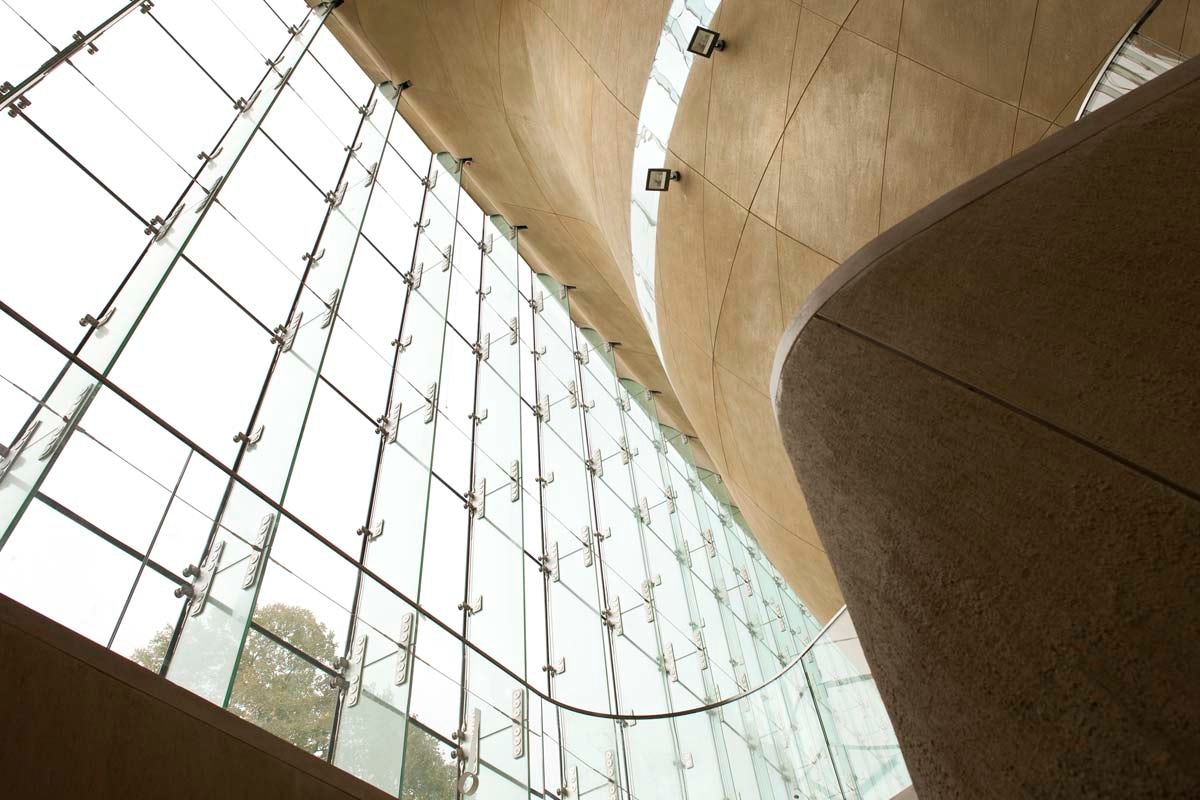In over 25 countries across multiple continents, Jewish museums are dedicated to the preservation of Jewish identity and culture. Museum visitors of all backgrounds are invited to learn about the triumphs and tragedies of Jewish history. Exhibitions explore a wide variety of subjects, ranging from ancient artifacts to the events of the Second World War to contemporary Jewish art and design.
These cultural institutions — particularly those focused on Holocaust remembrance — are charged with the daunting task of presenting and historicizing a complicated history. The architects behind these spaces ask themselves: how can cities commemorate an unfathomable tragedy? How can designers represent loss in positive form?
Confronted with these challenges, architects like Daniel Libeskind and Peter Eisenman’s solutions for modern Jewish museum design marked major developments in architectural history and theory. They each created a visual and symbolic language rich with subversive references to Jewish tradition. Drawing on the Jewish ban against graven images, these buildings include almost no plaques, inscriptions, or visual symbols to make identification easy. They acknowledge that the act of remembering history fully is inherently flawed and arguably impossible. In turn, their designs purposely raise more questions than they answer.
These modern buildings make the act of remembering complicated, abstract, and intellectually rigorous. They remind us that understanding the past isn’t simple or straightforward. And maybe it shouldn’t be.
Take a tour of the following Jewish museums designed by a diverse group of architecture firms:

© Studio Libeskind

© Studio Libeskind
Felix Nussbaum Museum by Studio Libeskind, Osnabrück, Germany
Dedicated to Felix Nussbaum, the German-Jewish artist, this museum is Libeskind’s first completed building. The interior galleries exhibit the late artist’s work completed before he was sent to Auschwitz. The museum includes a separate, temporary gallery space focusing on art that deals with issues of racism and intolerance. Designed as a visual representation of Nussbaum’s life, the structure’s jagged edges, sudden breaks, and dead ends recall the artist’s struggles during the war.

© Studio Libeskind, Spirit of Space, Studio Daniel Libeskind

© Studio Libeskind, Spirit of Space, Studio Daniel Libeskind
Jewish Museum Berlin by SPIRIT OF SPACE & Studio Libeskind, Berlin, Germany
Libeskind’s Jewish museum in Berlin looks at the history of the German-Jewish population from the 4th century to the present. Visitors explore three intersecting voids, or ‘Axes,’ representing the three paths of Jewish life in Germany: continuity in German history, emigration from Germany, and the Holocaust. The zig-zagging modern building is connected to the adjacent older building via underground passageways, creating a connection between old and new styles.

© Studio Libeskind

© Studio Libeskind
Contemporary Jewish Museum by Studio Libeskind, San Francisco, CA, USA
Like his Jewish museum in Berlin, Libeskind’s San Francisco counterpart features the same jagged edges and cut-out shapes that let in natural light. Attached to the city’s original Jewish museum, the new extension features work by contemporary Jewish artists. The diamond-shaped addition is home to many live music performances, film screenings, and lectures from curatorial staff.

© Studio Libeskind

© Studio Libeskind
Danish Jewish Museum by Studio Libeskind, Copenhagen, Denmark
Located in one of the oldest districts of Copenhagen, the Danish Jewish Museum features art and artifacts dating back to the 17th century. The museum’s new interior space is inspired by the Hebrew concept of a “mitzvah,” or good deed. A reference to how the majority of Danish Jews were saved from the Nazis by fellow countrymen in 1943, this idea is embodied by the light, form, and structure of the new gallery space.

© REVASTUDIO

© REVASTUDIO
Babi Yar Museum by REVASTUDIO, Kiev, Ukraine
The site of one of the worst series of massacres during the Holocaust, Babi Yar is now home to an emotionally powerful Jewish museum. The building is inspired by a “tallit,” a Jewish prayer garment, and stands next to a Jewish cemetery. Cement flooring surrounds the museum, delineating the historic site from its surroundings.

© Krueck Sexton Partners

© Krueck Sexton Partners
Spertus Institute of Jewish Studies by Krueck+Sexton Architects, Chicago, IL, USA
Situated in downtown Chicago, the Spertus Institute houses galleries, classrooms, a theater, and offices. In contrast to the more traditional buildings on either side of the Institute, the transparent glass façade is meant to celebrate the Jewish tradition of openness and hospitality.

© Lahdelma & Mahlamäki Architects

© Lahdelma & Mahlamäki Architects

© Lahdelma & Mahlamäki Architects
Museum of the History of the Polish Jews by Lahdelma & Mahlamäki Architects, Warsaw, Poland
Warsaw’s Jewish museum surveys the history of the Polish Jews from the Medieval period to the 21st century. Located in a park that was once the Jewish ghetto, the museum’s location is an intentional, emotionally resonant choice. The abstract building design is inspired by Old Testament creation stories, a reference that is hard to pinpoint but easy to feel as visitors enter the main hall.




